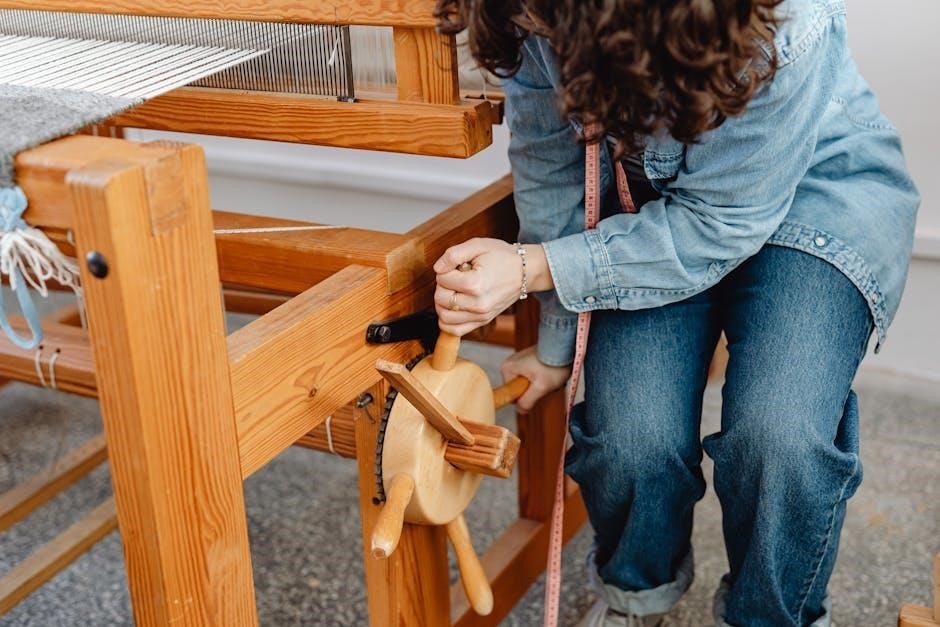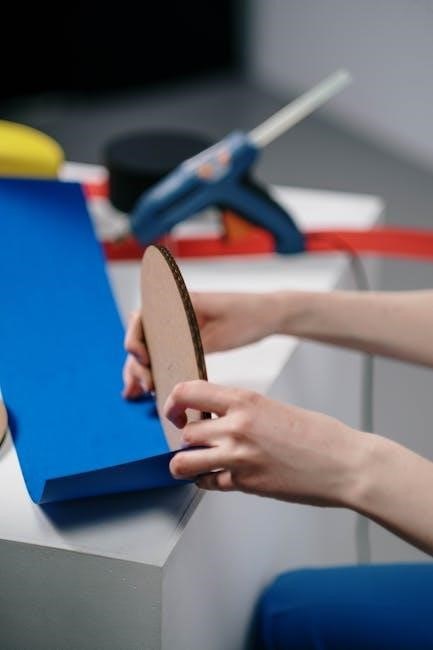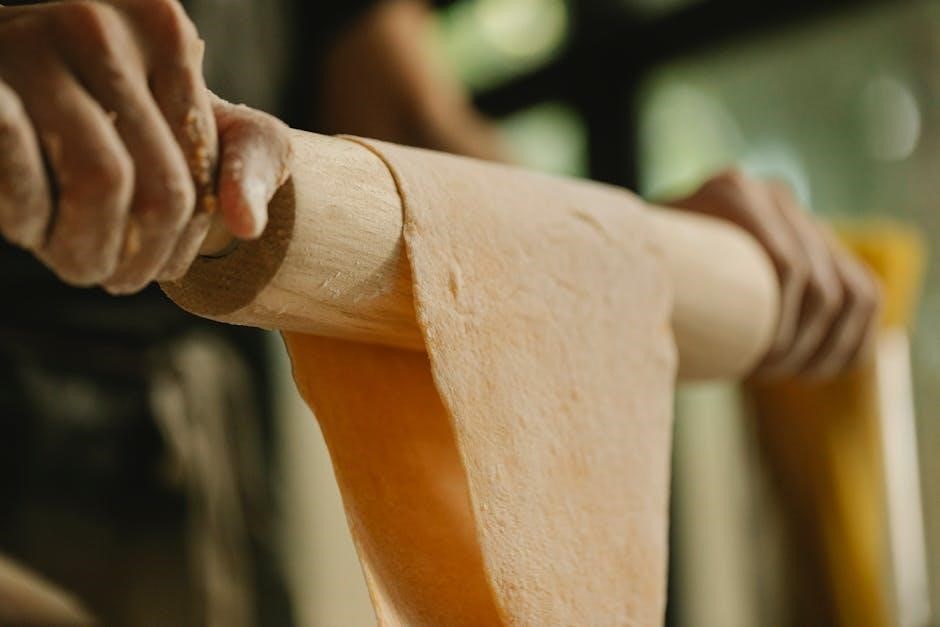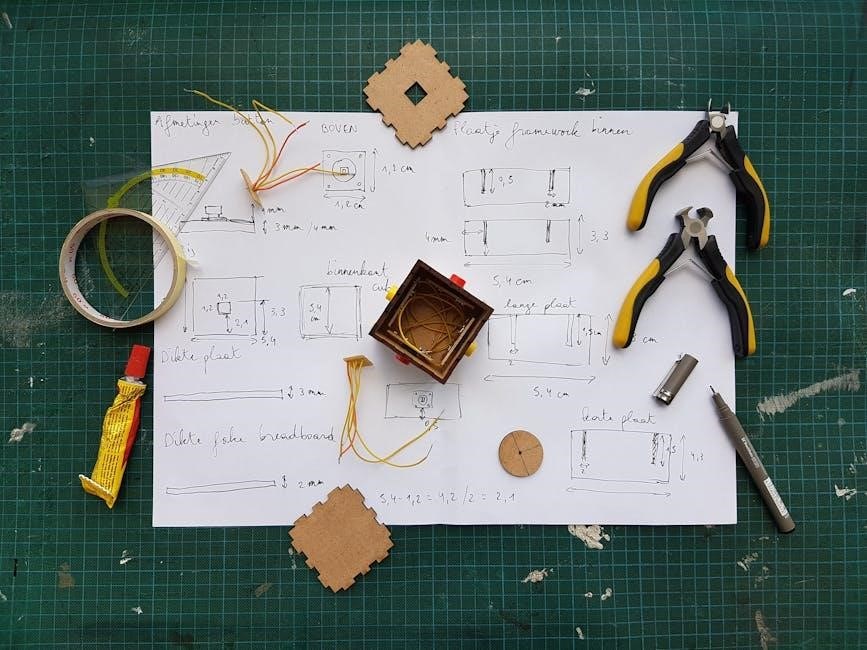breadman bread maker instruction manual
The Breadman Bread Maker is a versatile appliance designed for homemade bread making‚ offering ease of use and consistent results. With various models like TR700C‚ TR2200C‚ and BK1060BC‚ it provides features such as manual settings‚ crust color selection‚ and programmable cycles for customizable bread creation. Perfect for both beginners and experienced bakers‚ it ensures fresh‚ high-quality bread with minimal effort.
1.1 Benefits of Using a Breadman Bread Maker
Using a Breadman Bread Maker offers numerous benefits‚ including the ability to create fresh‚ homemade bread with minimal effort. It allows for customization of crust color‚ cycle settings‚ and ingredients‚ catering to various preferences. The machine’s programmable features‚ such as delay start‚ simplify bread making by automating the process. Additionally‚ it ensures consistent results‚ making it ideal for both novice and experienced bakers. Its versatility and efficiency make it a valuable addition to any kitchen‚ providing fresh bread at home.
1.2 Overview of the Breadman Bread Maker Models
Breadman offers a range of models‚ each with unique features catering to different baking needs. The TR700C and TR2200C models are popular for their programmable settings and crust color options. The BK1060BC and BK1050S models provide advanced features like customizable cycles and delay start. These models vary in capacity‚ with some producing up to 2-pound loaves‚ ensuring users can choose the right size for their households. Each model is designed for ease of use and durability.

Safety Precautions
Always keep children away from the machine while it’s operating. Ensure the bread maker is placed on a stable‚ heat-resistant surface. Never leave it unattended during operation. Use oven mitts when handling the hot bread pan or freshly baked bread to avoid burns.
2.1 General Safety Tips

- Always keep children away from the bread maker during operation.
- Place the machine on a stable‚ heat-resistant surface to prevent accidental tipping.
- Never leave the bread maker unattended while it is in use.
- Avoid touching hot surfaces or the bread pan with bare hands.
- Use oven mitts or tongs to handle the bread pan or freshly baked bread.
- Ensure proper ventilation in the kitchen to avoid moisture buildup.
- Regularly inspect the power cord and plug for any damage.
- Unplug the machine when not in use or before cleaning.
2.2 Electrical Safety Guidelines
Always use the Breadman Bread Maker on a dedicated 120V electrical outlet to prevent overload. Avoid using extension cords or adapters‚ as they may cause malfunctions. Ensure the power cord is kept away from water and heat sources. Never submerge electrical components in water. If the machine malfunctions‚ unplug it immediately. Regularly inspect the cord for damage and replace it if necessary. Use only genuine replacement parts to maintain safety standards.

Understanding the Machine Components
The Breadman Bread Maker features a bread pan‚ kneading blade‚ and control panel. These components work together to mix‚ knead‚ and bake dough into fresh bread.
3.1 Key Parts of the Breadman Bread Maker
The Breadman Bread Maker includes essential components like the bread pan‚ kneading blade‚ and lid. The control panel allows users to select settings and monitor progress. The non-stick coating on the pan ensures easy dough release. These parts work together to mix‚ knead‚ and bake bread efficiently. Regular maintenance of these components ensures optimal performance and longevity of the machine.
3.2 Features and Functions Explained
The Breadman Bread Maker features programmable cycles‚ delay start‚ and crust color options‚ allowing customization. It includes a non-stick bread pan and kneading blade for efficient mixing and baking. The control panel offers intuitive settings for cycle selection‚ timer‚ and temperature; These features ensure versatility‚ enabling users to create a variety of bread types‚ from classic loaves to gluten-free options‚ with ease and precision. Regular updates enhance performance and user experience.

Assembly and Initial Setup
Unpack and clean the Breadman Bread Maker before first use. Place it on a stable‚ heat-resistant surface with good ventilation. Plug in and ensure all parts are secure for safe operation;
4.1 Unpacking and Cleaning Before First Use
Unpack the Breadman Bread Maker carefully‚ ensuring all components are included. Clean the bread pan‚ kneading blade‚ and exterior with a damp cloth before first use. Avoid harsh chemicals to prevent damage. Dry thoroughly and ensure all parts are securely in place. Proper cleaning ensures optimal performance and longevity. Also‚ consider registering your product for warranty and support.
4.2 Placing the Machine in the Kitchen
Position the Breadman Bread Maker on a stable‚ heat-resistant countertop‚ away from direct sunlight and moisture. Ensure good ventilation to avoid overheating. Place it at least 4 inches from any walls or appliances for proper airflow. Keep the power cord away from hot surfaces and water sources. A clean‚ dry‚ and stable environment ensures safe operation and optimal performance of your Breadman Bread Maker.
Operating the Breadman Bread Maker
Operating the Breadman Bread Maker involves pressing START‚ using the control panel to select cycles‚ and ensuring ingredients are added in the recommended order for optimal results.
5.1 Basic Operation and Control Panel
Start by pressing the START button. The control panel allows easy selection of cycles‚ crust color‚ and delay start. Ingredients are mixed‚ kneaded‚ and baked automatically. Choose from rapid rise‚ basic‚ or programmable cycles. The machine ensures precise temperature and timing for perfect bread. Use the crust color button to select light‚ medium‚ or dark crust. The LCD display shows cycle progress‚ and the machine shuts off automatically after completion for safe operation.
5.2 Starting the Bread-Making Cycle
Press the START button to begin the cycle. The machine will mix‚ knead‚ rise‚ and bake the dough automatically. Select the desired cycle and settings beforehand. The LCD displays progress‚ ensuring precise timing. Once started‚ the machine handles all stages‚ from mixing to baking. Allow it to complete the cycle without interruption. The bread maker will shut off automatically when done‚ producing a fresh‚ perfectly baked loaf every time for consistent results.
Programming the Bread Maker
Program your Breadman with ease‚ utilizing features like timer settings‚ delay start‚ and crust color selection. Customize cycles to suit your recipe needs for perfect results.
6.1 Setting the Timer and Delay Start
The Breadman allows you to set a delay start‚ enabling you to prepare ingredients in advance and begin baking at a convenient time. Use the timer to schedule cycles‚ ensuring your bread is ready when you need it. This feature is particularly useful for overnight preparation‚ allowing you to wake up to freshly baked bread. Follow the manual’s instructions to program accurately.
6.2 Choosing the Right Cycle and Settings
Selecting the appropriate cycle and settings on your Breadman ensures optimal bread quality. Choose from options like basic‚ French‚ whole grain‚ or gluten-free cycles‚ depending on your recipe. Use the control panel to adjust settings such as crust color‚ loaf size‚ and delay start. Ensure the cycle matches the type of flour and dough texture for best results. Refer to your manual for specific model features and guidance on customization.

Selecting Ingredients
Selecting the right ingredients is crucial for perfect bread. Use high-quality flour‚ yeast‚ and liquids‚ ensuring measurements are precise. Add ingredients in the recommended order for optimal results‚ as specified in your manual.
7.1 Types of Flour and Their Uses
Different flours yield varied bread textures. All-purpose flour is ideal for classic loaves‚ while bread flour enhances gluten for chewier bread. Whole wheat flour adds nutty flavor and fiber. Cake flour is suitable for delicate bread‚ and gluten-free flours cater to dietary needs. Each type requires precise measurement to ensure proper dough consistency and rise‚ as detailed in the manual.
7.2 Yeast and Other Essential Ingredients
Active dry yeast or bread machine yeast is crucial for fermentation. Use 1-2 teaspoons depending on the recipe. Fresh yeast is not recommended. Salt enhances flavor‚ and sugar feeds yeast. Liquids‚ like water or milk‚ hydrate ingredients. Fats (oil or butter) add moisture and tenderness. Measure precisely for optimal results‚ as outlined in the manual. Proper ingredient ratios ensure a light‚ airy texture and flavorful bread.
7.3 Liquid Ingredients and Measurements
Liquid ingredients like water‚ milk‚ or eggs hydrate the dough and contribute to texture. Use room-temperature liquids for optimal yeast activation. Measure precisely‚ as excess liquids can lead to a too-wet dough. Do not overfill the bread pan beyond recommended levels to avoid overflow. Accurate measurements ensure proper dough consistency and even baking. Always refer to the manual for specific guidelines on liquid quantities and ratios for best results.
Troubleshooting Common Issues
Common issues include dense bread‚ uneven baking‚ or machine stopping mid-cycle. Check settings‚ ingredient measurements‚ and yeast freshness. Ensure proper dough consistency and cycle selection for optimal results.
8.1 Common Problems and Solutions
Dense bread: Often caused by too much flour or old yeast. Ensure accurate measurements and use fresh yeast. Uneven baking: Check oven settings and dough consistency. Machine stopping mid-cycle: Avoid overloading and ensure correct ingredient order. For non-perishable recipes‚ restart the cycle if needed. Always use bread machine yeast for best results. Consult the manual for model-specific troubleshooting guides to resolve issues effectively and maintain optimal performance.
8.2 Dealing with Undercooked or Overcooked Bread
Undercooked bread: Check if the timer or crust settings are incorrect. Adjust the baking time or crust color to ensure proper cooking. Overcooked bread: Reduce the timer or crust setting. Ensure ingredients are measured accurately and placed in the correct order. For non-perishable recipes‚ restart the cycle if needed. Always use bread machine yeast for consistent results. Refer to the manual for model-specific adjustments to achieve perfectly baked loaves every time.

Maintenance and Cleaning
Regular cleaning maintains performance.
Unplug before cleaning.
Use mild soap on pan and blade.
Avoid abrasive cleaners.
Dry thoroughly after cleaning.
Store properly to prevent rust.
9.1 Regular Cleaning of the Machine
Regular cleaning is essential to maintain the Breadman Bread Maker’s performance and longevity. Always unplug the machine before cleaning to ensure safety. Use mild soap and warm water to wipe down the exterior and interior. Avoid using abrasive cleaners or scrubbers‚ as they may damage the finish. The bread pan and kneading blade should be washed with gentle dish soap and dried thoroughly to prevent rust. Regular cleaning prevents leftover dough and crumbs from building up‚ which can affect future batches. By maintaining a clean machine‚ you ensure consistent results and extend its lifespan. This simple routine keeps your Breadman Bread Maker in optimal working condition. Always refer to your manual for specific cleaning instructions tailored to your model. Proper care ensures your machine continues to produce delicious homemade bread for years to come. Regular maintenance is key to preserving the quality and functionality of your appliance. Keep your Breadman Bread Maker clean and well-maintained for the best baking experience.
9.2 Maintaining the Bread Pan and Kneading Blade
Proper maintenance of the bread pan and kneading blade ensures optimal performance. After each use‚ wash the bread pan with mild soap and warm water‚ avoiding abrasive cleaners. Dry thoroughly to prevent rust. For the kneading blade‚ gently scrub off dough residue and rinse with warm water. Regularly inspect for wear and tear. If the blade becomes worn‚ replace it to maintain proper dough mixing. Lubricate moving parts occasionally to ensure smooth operation. Always refer to your Breadman manual for specific care instructions; Proper care extends the lifespan of these essential components. Cleaning and maintaining the bread pan and kneading blade prevents rust and ensures even dough mixing. Regular maintenance is crucial for consistent bread quality. Always handle these parts with care to avoid damage. Proper upkeep ensures your Breadman Bread Maker continues to function effectively. Keep your machine in top condition by prioritizing the care of its key components. Regular maintenance is key to achieving perfect loaves every time.
Tips and Tricks
Experiment with prepackaged mixes for easy recipes. Add ingredients in the suggested order for optimal results. Try manual settings for customizing cycles and crust colors. Ensure yeast is fresh for proper rise. For nonperishable recipes‚ restart the cycle if needed. Regularly clean and maintain the bread pan and blade for consistent performance. Explore various settings to enhance flavor and texture. Customize recipes to suit your preferences. Always follow the manual’s guidelines for best results. Keep experimenting to achieve perfect loaves every time.
10.1 Enhancing Flavor and Texture
To enhance flavor and texture‚ use fresh yeast for optimal rise and experiment with ingredients like herbs‚ spices‚ or nuts. Adjust crust color settings for desired crispiness. Ensure ingredients are added in the correct order for even mixing. Try manual settings to customize cycles‚ allowing better control over dough development. Explore various bread mixes or create custom recipes to suit your taste preferences. Regular cleaning and maintenance of the bread pan and blade ensure consistent results. Proper yeast usage and ingredient freshness are key to achieving a perfect loaf. By following these tips‚ you can create delicious‚ personalized bread with ease.
10.2 Customizing Recipes and Settings
Customize recipes by experimenting with ingredients like herbs‚ spices‚ nuts‚ or seeds. Adjust settings to suit your preferences‚ such as crust color or cycle duration. Use programmable features to create unique bread styles. For non-perishable recipes‚ restart cycles if needed‚ though results may vary. Try prepackaged mixes or craft custom recipes for variety. Manual settings allow precise control over mixing‚ kneading‚ and baking times‚ ensuring personalized bread creation tailored to your taste.
The Breadman Bread Maker simplifies bread making‚ offering versatile models and customizable settings for fresh‚ high-quality bread. With easy-to-follow manuals and programmable features‚ it ensures consistent results and delicious homemade loaves tailored to your preferences.
11.1 Final Thoughts on Using the Breadman Bread Maker
The Breadman Bread Maker is a fantastic addition to any kitchen‚ offering ease‚ versatility‚ and consistent results. Its programmable features and customizable settings make it ideal for both novices and experienced bakers. With models like the TR700C and TR2200C‚ users can create a variety of bread types effortlessly. The included manuals provide clear instructions‚ ensuring a seamless experience. Whether you’re making classic loaves or experimenting with new recipes‚ the Breadman delivers fresh‚ high-quality bread every time‚ making it a valuable investment for homemade baking enthusiasts.
